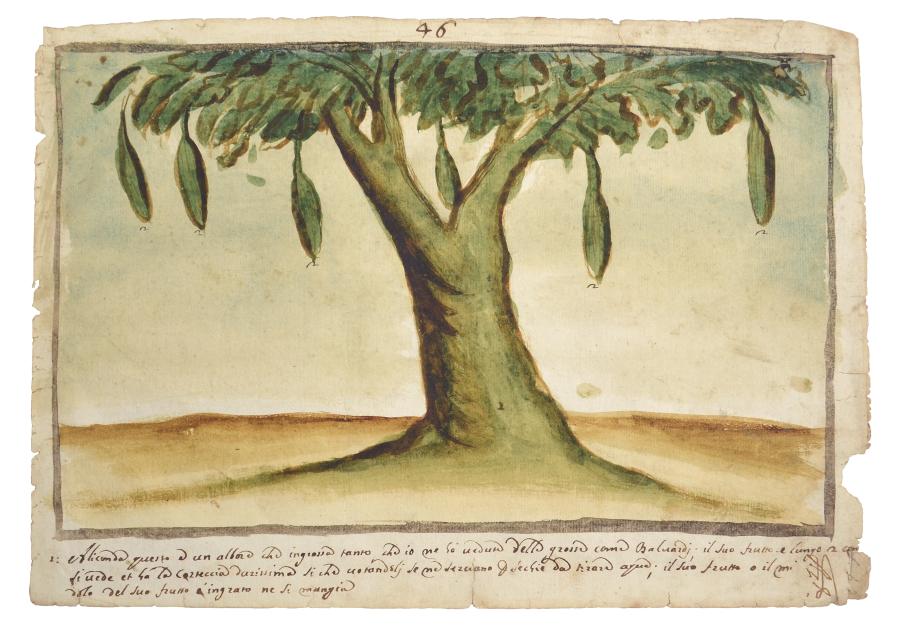PW046: Aliconde tree
1: Aliconde1 questo e un albore che ingrossa tanto che io ne hò veduto delle grosse come Baluardi; il suo frutto e lungo 2 come si vede et ha la carteccia durissima si che votandoli se ne servano p[er] sechie da tirare aqua; il suo frutto o il midolo del suo frutto é ingrato ne si mangia
1: Aliconde this is a tree that grows so much that I have seen some as large as Fortresses. Its fruit is long 2 as can be seen and has a very hard shell so that once emptied they used them as buckets to draw water; its fruit or the flesh of its fruit does not taste good nor is eaten
- 1Cavazzi tells us that the Aliconde is “what the blacks call Bondo” i.e. mbondo, pl. kimbondo in Kimbundu, also known by its lusitanized name of imbondeiro [Adansonia digitata] or baobab, today the National Tree of Angola. In Kikongo, it is called nkondo, pl. nkondo. Bentley, Dictionary and grammar of the Kongo language, as spoken at San Salvador, the ancient capital of the old Kongo empire, West Afrika [and Appendix], 384. See Merolla’s description in Angelo Piccardo, Breve, e succinta relatione del viaggio nel regno di Congo nell’ Africa meridionale, fatto dal P. Girolamo Merolla da Sorrento (Napoli., 1692), 188. See description of aliconde “che I Neri chiamano Bondo” in Cavazzi and Alamandini, Istorica descrizione, 28.

Add new comment